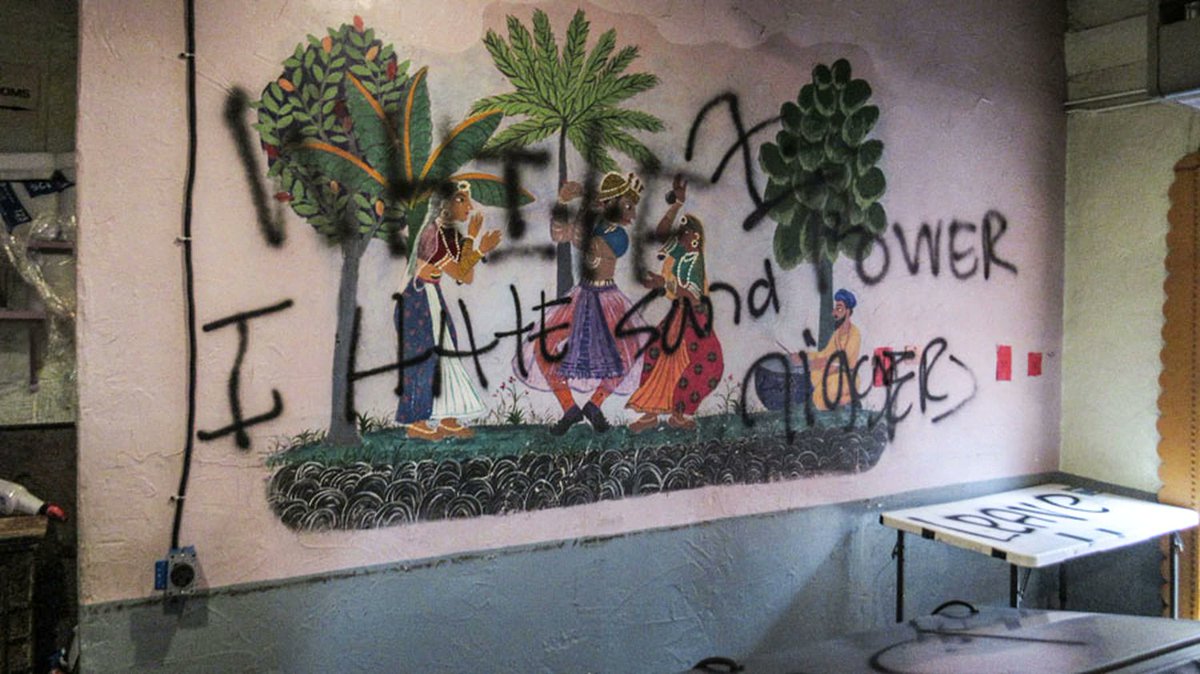
Indian farmers are leading the largest strike in human history.
They are fighting new laws that hurt the working class and decades of government abuse and neglect that has had disastrous results on their health, environment, and economy.
cnn.com/2020/12/11/opi…
They are fighting new laws that hurt the working class and decades of government abuse and neglect that has had disastrous results on their health, environment, and economy.
cnn.com/2020/12/11/opi…
Tens of thousands of farmers have marched to the Indian capital of New Delhi from neighboring states to protest this new legislation that hurts small farmers and benefits large corporations.
They have endured police brutality in response to their non-violent protests.
They have endured police brutality in response to their non-violent protests.
The current situation may feel like déjà vu to those familiar with modern Indian politics. The lives and livelihoods of Indian agricultural workers -- who make up more than half of India's workforce -- have long been secondary to the national interest of feeding the masses.
Nowhere has that been more evident than in the northwestern state of Punjab, India's agricultural hub and "bread basket."
Here's a case study for those who want more context on what's happening in India today.
Here's a case study for those who want more context on what's happening in India today.
In May of 1984, Punjabi leaders initiated a campaign for equal rights, Punjab Bandh, which blocked the transport of crops and withheld taxes from the federal government. It was a part of a states' rights movement against the central government in New Delhi.
In response, the federal government deployed 100,000 army troops to the state.
Within a month, the Indian government would launch a military attack on the Darbar Sahib (Golden Temple) of Amritsar, the most significant of Sikh sites.
Within a month, the Indian government would launch a military attack on the Darbar Sahib (Golden Temple) of Amritsar, the most significant of Sikh sites.
Within the year, the prime minister of India was assassinated by her Sikh bodyguards.
In the decade that followed, there was turmoil in Punjab: the Indian state carried out widespread human rights abuses, "encounter killings" and the extra-judicial disappearances of thousands.
In the decade that followed, there was turmoil in Punjab: the Indian state carried out widespread human rights abuses, "encounter killings" and the extra-judicial disappearances of thousands.
The current protests in India should warn us of another pressure-cooker situation. Today, the farmers are reacting to the new laws that divest them of minimum price guarantees for their crops.
But their grievances and their impetus for protest go far beyond that. To understand what they are protesting and why, we must recognize the historical context.
In 1966, less than 20 years into its nationhood, India was faced with impending famine and responded by introducing a new, experimental technology into key states, in a program known as the Green Revolution.
Having demonstrated success in some other parts of the world, engineered seeds, chemicals and irrigation were beginning to become popular, and India embraced them.
The Green Revolution was an agricultural experiment tested out on the fields of Punjab.
The Green Revolution was an agricultural experiment tested out on the fields of Punjab.
While the Green Revolution produced more crops in the short-term and helped mitigate India's risk of famine, its long-term effects have contributed to the degradation of the economy, environment and health of Punjab and exacerbated the strife between farmers and the government.
The Central Government's subsidization of Green Revolution technologies have effectively coerced farmers to adopt these resource-intensive methods. Yet India has not guaranteed a profitable market for these crops, leaving the farmers in an unviable situation.
The input cost for producing crops already exceeds the purchase price in many instances: According to a recent report from Punjab Agricultural University, eight out of ten farmers are in debt, and the average amount a farmer owes is more than four times the average annual income.
Further, the government has not protected farmers from multinational corporations. International agricultural giants have been deregulated since 1988, through World Bank-encouraged seed policies, and they have been building their empires for decades now.
This is an issue for farmers, who are not allowed to keep their seeds at the end of the year and have to buy new seeds every year.
Indian Prime Minister Narendra Modi has said that the reforms are intended to benefit farmers. But removing its existing price guarantees for crop sales only empowers these corporations by requiring farmers to negotiate with them individually.
That means that as these corporations increase market supply, small farmers will struggle to compete and be pushed further into debt.
The bleak economic outlook has contributed to psychological degradation in the region. Punjabi farming communities have been ravaged by an epidemic of farmer suicides. Farmer's union, Bharatiya Kisan Union, estimates that 90,000 Punjabi farmers committed suicide between 1990-2006
In the last two years alone, the same union has documented more than 1,000 cases, an average of more than one suicide per day. Dozens more have committed suicide since the Modi government announced this legislation as ordinances in June, according to recent data.
This crisis is not limited to Punjab. A 2011 report from the Center for Human Rights and Global Justice at New York University found that one Indian farmer commits suicide every 30 minutes.
Green Revolution technology is suspected to have contributed to disastrous rates of cancer. In the past decade, we have seen reports of "cancer trains" and Punjab's reputation as India's "cancer belt;" researchers had linked contaminated water to the sharp uptick in cancer cases.
High-yield variety seeds require excessive amounts of pesticides and fertilizers, which seep into the soil and water and are believed to contribute to high rates of cancer.
Farming communities find themselves in a double-bind: They suspect the chemicals are to blame for the high cancer rates, yet the Green Revolution crops will not grow without them.
The future also looks bleak from an environmental perspective. The Indian government still diverts Punjab's waters to other, non-agricultural states, in violation of international riparian law, and recent data suggest that Punjab's groundwater sources may run dry by 2039.
Much of the region's soil has been degraded to a point of near infertility, and is no longer capable of sustaining agriculture.
The Green Revolution was introduced in Punjab before anywhere else in India, and because of its initial success, it has been adopted around the world. It has become increasingly clear that India is committed to its current approach to farming, despite the disastrous costs.
The first and most obvious step is to repeal the recent laws and give farmers in India the same support they have in other countries around the world. India must meet their demands and enforce minimum price support for crops.
Asking its farmers -- 86% of whom own fewer than two hectares of land -- to negotiate with multinational corporations spells certain doom for small farmers and will inevitably precipitate a more drastic epidemic of economically driven farmer suicides.
In addition to regulating large companies, India must also adhere to existing legislation to protect the soil, water and bodies of the Indian people. It must support farmers in returning to sustainable agricultural methods that do not require intensive use of harmful chemicals.
The Indian government must stop diverting Punjab's river waters to other states so that farmers no longer pay high prices for it or dig deep, ill-fated wells.
The big picture here is that India must begin to value the lives of its own citizens over the potential economic gains for its nation.
By putting its perceived interests over the well-being of its people, the Indian government is not just harming those it is meant to serve. It is also undermining itself and putting the country's stability at risk.
• • •
Missing some Tweet in this thread? You can try to
force a refresh










